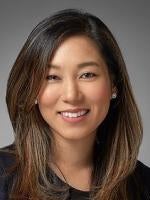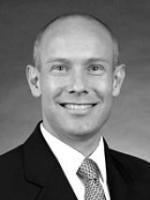In Duran v. LaBoom Disco, Inc., No. 19-600-cv (2d Cir. Apr. 7, 2020), the Second Circuit joined the Ninth Circuit in expansively defining Automatic Telephone Dialing System (“ATDS”) under the Telephone Consumer Protection Act (“TCPA”). The Second Circuit held, like the Ninth Circuit before, that ATDS includes automated texts/calls to consumers from stored lists, while the Third, Seventh, and Eleventh Circuits have held the opposite, requiring that an ATDS make texts/calls not only automatically, but from a list of randomly generated numbers. The Second Circuit decision highlights the growing Circuit split on the issue and potentially foreshadows a date with the Supreme Court. For now, the decision will likely encourage TCPA class action plaintiffs to fill their dance cards in New York and other states in the circuit.
The TCPA prohibits calls or texts to cell phones using an ATDS without sufficient prior express consent. A violation results in a statutory penalty of $500 per call, or up to $1,500 per call for a knowing or willful violation. In TCPA class actions, exposure can be in the many millions of dollars.
Authorities have hotly disputed the meaning of ATDS. In 2015, the Federal Communications Commission (“FCC”) broadly interpreted ATDS to include equipment that has the “potential” capacity to autodial, an interpretation that some argued included all personal cell phones. In 2018, the D.C. Circuit in ACA International v. FCC, 885 F.3d 687 (D.C. Cir. 2018) invalidated the FCC’s 2015 interpretation of ATDS as too broad. The FCC has since failed to issue a ruling defining ATDS. In the absence of that guidance, many Circuit courts have issued their own, different interpretations.
In this case, dancer Duran saw a Facebook advertisement inviting interested club-goers to text a code to a designated number to obtain free admission to a party, which he did. After the party, the texts did not stop. Duran claimed to have received over 300 unsolicited text messages from La Boom Disco. He filed suit, seeking to collect at least $500 for each text message he received (i.e. $500 x 300 = $150,000). He also alleged a class action, seeking to recover a similar penalty of at least $500 for each similar text message sent by La Boom Disco to consumers going back four years. On summary judgment, the Eastern District of New York found in favor of La Boom Disco, holding that it did not send the text messages via ATDS because the messages were not automatic or random.
The Second Circuit reversed, finding that ATDS includes blasts from stored lists of specific consumers. In reaching its conclusion, the Second Circuit questioned whether, to qualify as an ATDS, (1) numbers must be stored “using a random or sequential number generator”, or (2) “numbers may be produced using such a number-generator, and that they can be stored in any way possible?” The Second Circuit explained that the first approach suggests that the texting platforms at issue lacked the capacity to be ATDSs because they only dialed from lists prepared by humans. However, under the second approach, the platforms would have the requisite capacity to be considered ATDSs because “the programs ‘store’ the lists of numbers[.]” The Second Circuit opted for the second approach.
The Second Circuit reasoned that the second approach “avoids rendering any word in the statute ‘surplusage.’” In particular, the Court stated that “under the first approach, an ATDS would need to be able either to ‘store’ or ‘produce’ numbers using a random-or sequential-number-generator.” The Court noted that this approach cannot explain why the statute includes both “store” and “produce” when “any number that is stored using a number-generator is also produced by the same number-generator.” The Court concluded that the second approach “rescues the statute from the problem of surplusage” as a dialing system can be an ATDS if it can “store” numbers and also if it can “produce” numbers “using a random or sequential number generator[.]”
With respect to human intervention, the Second Circuit opined that “clicking ‘send’ or some similar button—much like flipping an ‘on’ switch—is not the same thing as dialing, since it is not the actual or constructive inputting of numbers to make an individual telephone call or to send an individual text message.” Because the platforms at issue only required a human to click “send,” the Second Circuit concluded “that the programs did not require human intervention in order to dial” and therefore had the “capacity necessary to be considered ATDS.”
What does this mean? In recent years, TCPA class action plaintiffs have favored the Ninth Circuit, especially California, in choosing where to file suit. In light of LaBoom Disco, TCPA class action plaintiffs may now file more such cases in the Second Circuit. Given the widening split, it is increasingly important for the FCC to issue its long-awaited new definition of ATDS and/or that the U.S. Supreme Court address the issue. Corporations who call/text consumers should not be subject to different definitions of ATDS in different courts with potentially millions of dollars at stake.




 />i
/>i

